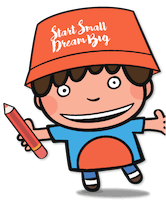Be part of the solution, not the pollution.
As an extension of the Kindness Week, the K1 children decided to explore deeper into the topic of trash. The three-week initiative started off with children participating in an activity that involves them to pick up rubbish around the neighbourhood.
Through the activity, we aim to allow children to develop into strong advocators for public cleanliness. At the same time, we believe that it will help children to experience the impact of inconsiderate littering behaviour and the difficulties faced by cleaners in clearing up the mess. Most importantly, children can inculcate the importance of being considerate, and encourage others to do the same so that all can enjoy a clean environment.
Moving forward, after children have collected the litter around the neighbourhood, they were given the opportunity to sort their rubbish into recyclables and non-recyclables.
With the recyclable materials, we added in an element of fun for the children as they sort the items into the three recycling containers through an obstacle course. At the end of the obstacle course, children were required to do an underarm throw into the correct containers.
Did I mention? The children even created the recycling boxes on their own using the boxes collected by the parents!
Moving forward, children collaboratively created a graph to identify which trash most pollute the neighbourhood.
As children realize that there was much rubbish surrounding their neighbourhood, they decided to create poster to raise awareness. Before creating their posters, they had to do their research through videos as well as storybooks. Through the poster making activity, children are able to find out more on how to recycle through videos and storybooks borrowed by parents. It was noticed that there were discussion present and children were actively coming up with ideas on ways they can do their part.
To end off the mini project, the K1 children explored making paper from recycled materials and also building a three-dimensional artwork of their choice.
These activities aim to allow children to save paper by making their own out of recycled materials. Children will be able to understand better the purpose and value of recycling paper aside from learning how paper is made and its importance. Adding on, children can enhance their communication skills with others and build on their confidence to describe their inventions.
Let’s all save our world with tiny steps!






































![PCF SPARKLETOTS PRESCHOOL @ CANBERRA BLK 337 START SMALL DREAM BIG- "We Love Green, We Save Green We Use Green" [APRIL- SEPTEMBER 24]](https://media-cache-ap-1.littlelives.com/width/630/height/360/cover/https://littlestories-production.s3.amazonaws.com/media/stories/18206/images/original/image17284874223660.jpg)





